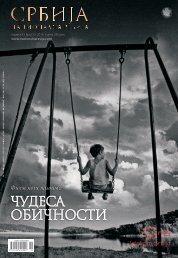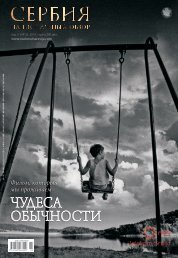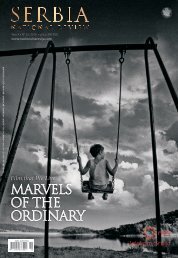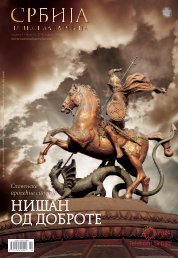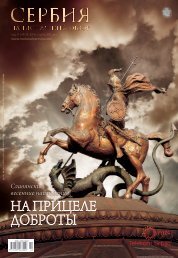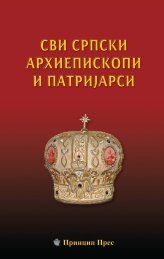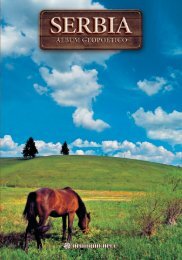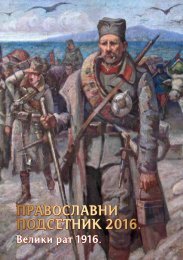Zajecar - engleski - niska rezolucija
You also want an ePaper? Increase the reach of your titles
YUMPU automatically turns print PDFs into web optimized ePapers that Google loves.
ZAJEČAR − CAPITAL OF SERBIAN EAST<br />
48<br />
Central Library “Sve to zar Mar ko vić”<br />
Data on the first book subscribers in Zaječar, Vražogrnac<br />
and neighboring places recorded only one year after the liberation<br />
from Turks, also indicated the existence of first private<br />
libraries at that time. However, the first public library<br />
would appear only a few decades after. Distant predecessor<br />
of today’s Central Library “Sve to zar Mar ko vić” was the<br />
Reading Room, founded on January 22, 1866 (some sources<br />
say that it was founded in 1860), whose fund was completely<br />
destroyed in the Serbian-Turkey War from 1876-1878. It was<br />
later restored and again, and for a long time, it was a cultural<br />
centre in Zaječar.<br />
Za je čar got first Public Library, located In the Gymnasium<br />
building, after several failed attempts, in 1909. When<br />
after the occupation of Serbia in 1915 the school was closed,<br />
the same happened to the Library. During World War One,<br />
all the books disappeared from its shelves. There is no<br />
data of the Library being restored between the world wars,<br />
but it is known that other bookstores and reading rooms<br />
were working.<br />
Two and a half months after the liberation in 1944, the<br />
city finally got its Library again. Today it has 100,000 books,<br />
a magazine section, CD library, reading room with 70 seats,<br />
computer system, 3,500 members enrolling each year. It is<br />
also conducting publishing activity, popularization of books<br />
at promotions, literary evenings, lectures and exhibitions.<br />
For more than thre decades it has been organizing manifestation<br />
“Flower in the Word, Flower in the Image”, a review of<br />
children’s literary and art work.<br />
National Museum<br />
Decades before the initiative to found a museum was officially<br />
launched in Zaječar, there had already been an interest<br />
for that. It was expressed by Gymnasium professors,<br />
many of whom were involved in scientific and research work.<br />
Thanks to them, a small museum was opened in the 1920’s at<br />
the school, with archaeological and geological-mining collections<br />
(partly destroyed during World War Two, partly scattered<br />
in a later period).<br />
The initiative to establish a museum was launched very<br />
soon after the liberation in 1944, but it was not going to be<br />
realized until 1951. Initially established as a hometown collection,<br />
in time the Museum has grown into a complex institution,<br />
with departments of archaeology, history, art history<br />
1<br />
2<br />
3<br />
4<br />
Central Library<br />
“Sve to zar<br />
Mar ko vić”<br />
in Zaječar<br />
Building of the<br />
National Museum,<br />
one of the symbols<br />
of the city<br />
Cemetery and<br />
Hiding place<br />
At the site Pi šura<br />
če sma, on the<br />
eastern outskirts of<br />
present-day Za ječa<br />
r, a cemetery (with<br />
urns) and the oldest<br />
traces of a settlement<br />
in this town were<br />
discovered. They date<br />
from the 14 th century<br />
B.C. “Hiding places<br />
for precious assets,<br />
probably buried<br />
during the threat of<br />
war”, date from the<br />
Iron Age, the last in<br />
prehistory. At that<br />
time, in Zlotska Cave,<br />
there was a settlement<br />
made of logs<br />
where bronze and<br />
iron tools were made.<br />
The most important<br />
findings are kept in<br />
the National Museum<br />
of Za je ča r.



